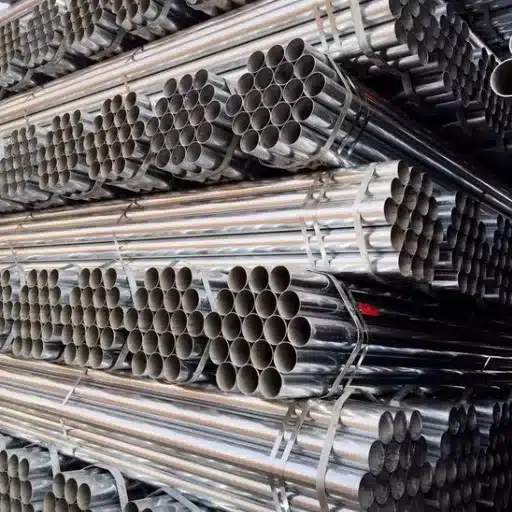Very few components are as useful in the construction, manufacturing, and even residential systems as steel pipes. This blog aims to act as a one-stop guide that covers all the distinguishing features of steel pipes, along with their types and applications. Even if you have no professional experience and are just interested in learning how these basic materials work in daily life, this article will help you gain confidence to navigate the world of steel pipes. From understanding the different varieties of steel pipes, such as seamless and welded, to their intended purposes, we’ll cover everything you need to know in order to appreciate their importance and multiple applications.
What Are the Common Types of Steel Pipes?
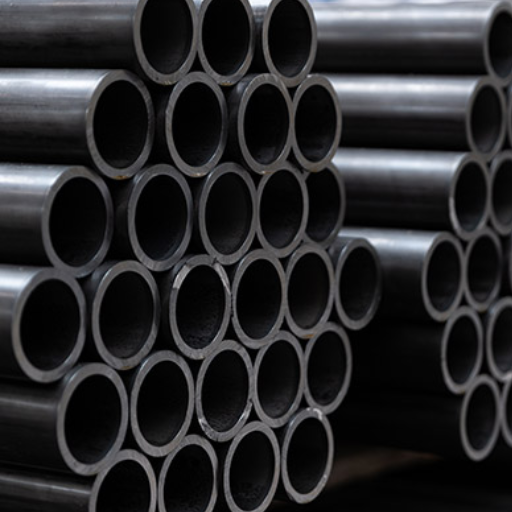
Steel pipes can be classified as either seamless or welded. For high-pressure applications that require pipes with greater strength, seamless pipes are the perfect choice as they are fabricated without joints or welds. For lower-pressure applications, versatile and cost-effective welded pipes, made by rolling and welding steel sheets, serve just as well. Both seamless and welded pipes come in various grades and finishes alongside stainless steel, which serves the construction, oil and gas, and plumbing industries.
Understanding Seamless Steel Pipes
I have noticed that seamless steel pipes are unique because of their outstanding strength and dependability. Their lack of joints guarantees consistent functionality under high stresses and harsh conditions, which is why they are frequently the most preferred for important industrial operations such as the transportation of oil and gas. Moreover, their flawless inner surfaces improve flow efficiency, making them exceptionally useful in fields that demand precision as well as endurance. Although they may be more expensive than welded ones, the overall value in terms of performance and safety they provide is unrivaled.
Exploring Welded Steel Pipe Options
Welded steel pipes are affordable and adaptable as compared to seamless pipes. Their manufacturing method permits thinner walls and larger diameters, which makes them suitable for construction and water distribution. Although welded pipes may not endure high-pressure environments as well as smooth pipes, their reliability has improved through advancements in welding technology. With appropriate grade selection and robust welded steel pipe quality control, they can meet a wide range of industrial needs durably and efficiently.
Characteristics of Galvanized Steel Pipes
For many industrial and structural purposes, galvanized steel pipes are a good option. In my professional history, it’s clear these pipes are popular due to their strong, cost-efficient, and corrosion-resistant properties. They are key traits that characterize galvanized steel pipes:
- Corrosion Resistance: Galvanized pipes are especially helpful in outdoor or high-moisture environments because the zinc coating applied during the galvanization procedure helps in preventing the pipes from rusting and corroding.
- Longevity: These pipes are manufactured to handle extreme situations for decades. The pipes are treated with a coat of zinc which significantly increases their life in comparison to steel pipes.
- Strength and Durability: The structural strength of galvanized steel pipes is very high. The pipes are able to withstand high levels of pressure making them fit for transportation of water, oil, gas, and other fluids.
- Cost-Effectiveness: Prolonged savings are cost-effective while requiring low maintenance due to the pipes enduring high amounts of pressure. Although the pipes do have higher upfront prices compared to other alternatives, the savings in the long run outweigh the cost.
- Versatility: The galvanized pipes can accept custom sizes and diameters, which makes them suitable for industrial and residential work, such as plumbing or fencing, along with serving as structural support for buildings.
- Low Maintenance: Reducing repair and replacement maintenance, the pipes don’t require much work to maintain,m due to the zinc coating providing structural strength.
From these criteria, it is clear why galvanized steel pipes are considered practical and reliable in most circumstances. They also balance operational efficiency, which is why I always recommend them for projects needing strength and anti-corrosive properties.
How Is a Steel Pipe Made?
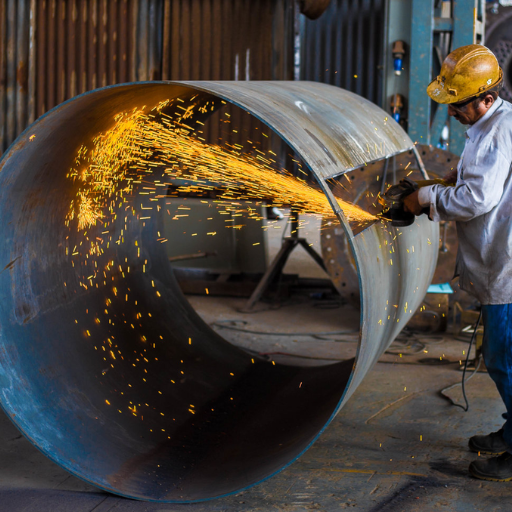
Steel pipes are produced through a detailed procedure that usually starts with raw steel being cast into billets. These billets are then heated and rolled into cylinders. Depending on the type of pipe required, the process can follow one of two main methods: seamless or welded. Seamless pipes are generated from piercing a solid billet to create a hollow tube, which offers greater strength and consistency. Roll steel and weld the edges to form a pipe, and you get welded pipes. The pipes are then treated, sometimes undergoing processes such as annealing, galvanization, coating, and other treatment procedures to enhance their sustained use against corrosive forces and performance.
The Manufacturing Process of Seamless Pipes
The manufacturing of seamless pipes is an exceptionally systematic and accurate process. It starts with the premium selection of steel billets, which are heated to a certain temperature. The heated blank is then pierced to form a hollowed-out tube. This critical step guarantees the uniformity and strength of the pipe. The hollowed-out tube is further transformed into a pipe through rolling or stretching until it reaches the required size. Finally, the pipe is subjected to rigorous quality checks and treatments, including but not limited to heat treatment, surface finishing, and any required polishing. These processes guarantee maximum compliance with industry standards. The strength of seamless pipes is unrivaled, making them critical in many industries.
Steps in Welded Steel Pipe Production
The manufacture of welded steel pipes involves forming steel into a desired shape and afterwards, welding the edges together. First, the steel is procured either in the form of sheets or strips, the steel can be either circular or rectangular. The edges or seams are attached via welding procedures like electric resistance welding (ERW) or submerged arc welding (SAW). Post-weld, the pipe is stress relieved with the proper treatment for further enhancement of durability. In summary, the welded pipe goes through the crucial post-welding inspections and finishing processes so that it adheres to industrial compliance.
Techniques Used in Galvanized Pipe Manufacturing
The techniques galvanized pipe manufacturing uses to maintain quality and durability are effortless to pinpoint. First, the base pipe is formed, with steel being the most common material, as it is welded together, as explained above. Next, the pipe goes through galvanization, which entails adding a protective layer of zinc to prevent corrosion. The most common type is hot-dip galvanizing, where the pipe is submerged in molten zinc, which allows for a greater bond to be formed between the coating and the steel surface. Electro-galvanizing is another method where an electrical current is used to place the zinc coat. Both techniques have their pros and cons; hot-dip galvanizing has more thickness and succumbs to greater wear and tear, while electro-galvanizing has a smoother surface. Regardless, each technique is chosen to maximize the performance of the pipe based on its intended application.
What Are the Applications of Steel Pipes?
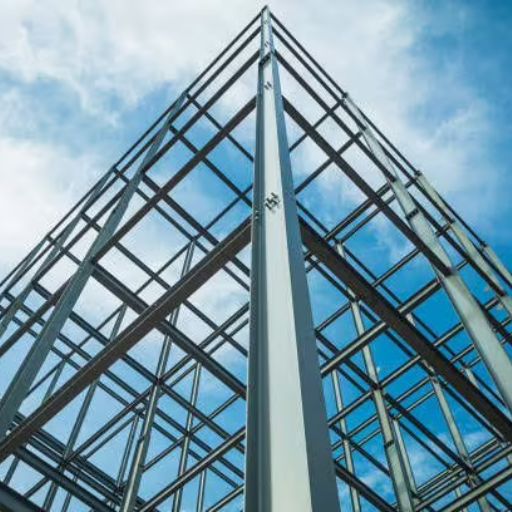
Due to their strength, durability, and versatility, steel pipes are utilized across multiple industries. They are commonly used in the transportation of water, oil, and gas in the energy and utility industries. Also, they serve as basic structural parts in construction, while being crucial in the manufacturing of equipment and machinery. Furthermore, steel pipes have wide applications in automotive and aerospace, as well as industrial processes; making them handy across different engineering disciplines.
Uses in the Oil and Gas Industry
steel pipes are highly important in the oil and gas industry. They are chiefly employed in the transportation of crude oil and natural gas over large distances, guaranteeing secure and efficient movement. Moreover, they are essential in exploration and drilling activities where their strength and resistance to high temperatures and pressures make them extremely useful. Steel pipes can be used in both offshore drilling platforms and underground pipelines, which makes them versatile. Like all other professionals in the industry, I am considering steel pipes because of their reliability and performance.
Steel Pipes in High-Pressure Applications
I always default to using steel pipes for high pressure applications and here is why. Steel pipes in particular have very high tensile strength. This means that the internal pressure which is quite common in industrial systems is within tolerable limits. This is incredibly important when it comes to things like oil, gas, or steam transport.
Continue explaining that steel pipes are effective by adding these points for consideration:
- Material Strength: Steel is able to resist deformation or rupture under great pressure due to its strength. This is the reason why other metals fail, steel is widely chosen for pipelines or systems containing high-pressure fluids.
- Wall Thickness: The intersecting components that are directly proportional to the pressure of the system are: wall thickness, as the thickness of a steel pipe’s wall is directly proportional to its pressure tolerance. Pipes designed for high pressure applications are usually built with thicker walls.
- Corrosion Resistance: A subset of corrosion resistance known as stainless steel galvanizes a number of steel pipes. Pipes of this kind are especially constructed to withstand corrosion, ensuring reliable service in harsh conditions.
- Temperature Tolerance: Steel pipes are designed to withstand extreme temperatures. More frequently than not, steel also has to endure high temperatures while under extreme pressure. Steel pipes are designed not only to operate under high pressure but also to contain it.
Knowing these criteria contributes to the comprehension of precisely why steel pipes are outstanding in such strenuous tasks. Their blend of strength, durability, and adaptability enables safe and efficient use, and I strongly recommend them for any high-pressure systems.
How Steel Pipes Are Used in Construction
The utility and strength steel pipes offer make them vital in construction works. Bridges, buildings as well and industrial complex units utilize them as a solid framework. Besides serving as a useful framework, water, gas, and other essential employment utilities rely heavily on steel pipes. Steel pipes prove most beneficial to construction engineers as they are able to endure great pressure andthe violence of nature.
How to Choose the Right Steel Pipe for Your Project?
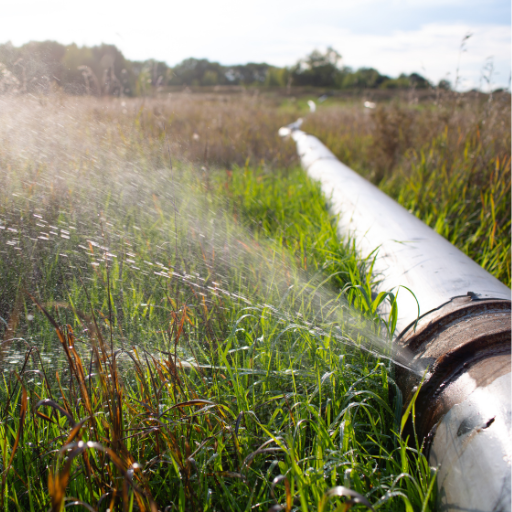
I can assure you that picking a pipe for your project isn’t simple; however, I have my personal method, which considers all the details at once. Firstly, assess whether the pipe is meant for fluid transport, aesthetics, structural functions like design elements, and so on. After this, grade the materials; for example, if you’re dealing with corrosive environments, stainless steel pipes would be best suited, while carbon steel pipes perform well in high-strength environments. Also, size constraints in terms of diameter, wall thickness, pressure rating, and others need to be balanced with the goals of the project. Finally, thorough web research should be done, in combination with partnering with a reputable vendor, to validate any quality and compliance claims. I can guarantee that these steps, taken properly, will add to the versatility and strength of the project.
Factors to Consider for Different Applications
When choosing materials for various applications, assess the working surroundings such as temperature, pressure, and the presence of corrosive substances. Consider mechanical property requirements such as tensile strength and ductility, then analyze whether the material meets these requirements. Also, consider the factors of cost and availability, as well as adherence to standards, in order to maximize performance and achieve project goals.
Selecting the Best Type of Pipe for Your Needs
Selecting the best kind of pipe relies heavily on its intended application. For high-pressure systems, pipes constructed from steel are usually appropriate because they are strong and durable. For other applications that require resistance to corrosion, stainless steel, along with plastic pipes like PVC and CPVC, are outstanding choices. For plumbing work, copper pipes are the most reliable because of their durability and antimicrobial properties. Always keep environmental impacts, budget, and compliance with other industry regulations in mind.
Understanding Mechanical Properties of Steel Pipes
While evaluating the mechanical properties of steel pipes, I pay attention to the primary aspects like tensile strength, yield strength, and ductility. These characteristics tell us how the pipe performs under stress and pressure. Steel pipes possess great flexibility since they are high-strength and highly resilient simultaneously, which complex applications can benefit from. In addition, the ability to resist deformation and retain shape under different temperature and load conditions is very useful. In my experience, knowing these characteristics helps select the material for the projects in order to guarantee safety and efficiency.
How Do Steel Pipes and Their Applications Differ?
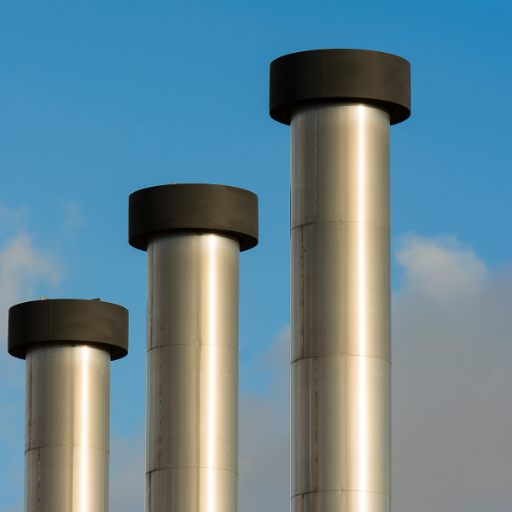
The variations in types of steel pipes and their uses differ according to their constituent material, their manufacturing process and design, and even the intended application. An example would be stainless steel pipes which are corrosion resistant and used in chemical or marine environments as compared to carbon steel pipes which are valued for their strength are utilized in construction or other industrial applications. Additionally, other features such as the pipe’s diameter, wall thickness, and even coating are determining factors contributing to the design’s efficiency for its intended purpose.
Comparing Alloy Steel Pipes vs. Stainless Steel Pipes
My analysis of alloy steel pipes starts with noting their contrast with stainless steel pipes relative to the application at hand. Both types of pipes have their advantages, but which one is deemed the best is always dependent on the environment of operations and the project specifications. Here’s how they differ based on key parameters:
- Corrosion Resistance
The resistance to corrosion exhibited by alloy steel pipes and stainless steel pipes is strikingly different. The former alloy-coated steel pipes may lack the protective properties against corrosive environments without additional treatment, but the latter excels with its high chromium content, forming oxide layers that stave off corrosion, especially in humid and chemical-prone environments, making stainless steel pipes perfect for marine conditions.
- Strength and Durability
The pressure and temperature resistance of alloy steel pipes might be unmatched as they are built to withstand extreme operating conditions, which makes them a go-to for most power plants and refineries. These pipes are also heavily used in industrial applications where sustaining intense physical stress is needed.
- Temperature Resistance
Stainless steel pipes and paramount grade alloy steel pipes do perform under duress, but they don’t stand a chance against the sticks and stones, or should I say stress, when put through the heavy use deformation testing.
- Cost
Due to the increased nickel and chromium content, stainless steel pipes tend to be more expensive. However, if pricing is a concern, performance alloy steel pipes may be a more cost-effective solution for certain applications.
- Maintenance
Stainless steel pipes do not require frequent upkeep as they are highly resistant to corrosion, in contrast to alloy steel pipes which do tend to need some form of inspection and protective coating to avert rusting and disintegration over time.
- Weight
Alloy steel pipes have a lower weight compared to stainless steel pipes, making them easier to handle in applications where every conserved ounce counts while maintaining required sturdy strength.
In the end, I would suggest analyzing these considerations as they apply to your particular project scope. Where appearance and corrosion resistance or maintenance is an issue, stainless steel pipes are the best choice. Alloy steel pipes, on the other hand, are great for economical projects and excel in high-pressure and high-temperature environments. The key in any application is aligning the material used to the requirements needed!
Advantages of Carbon Steel Pipe Over Other Types
carbon steel pipes have always stood out to me due to their remarkable strength and durability. For example, they are better than other materials in resisting shock and vibration, making them perfectly suitable for industrial applications, structural supports, industrial pipelines, etc. Furthermore, they are much more affordable than stainless steel or alloy steel, offering excellent value for the price. Due to their versatility and ease of fabrication, they can be found in many industries such as construction, energy, etc. Whenever any project requires affordability without compromising on reliability and durability, carbon steel pipes are the best option.
Why Galvanized Steel Is Preferred in Certain Projects
Due to lower upkeep, enhanced lifetime, and outstanding corrosion resistance, specific projects prefer galvanized steel. The zinc coating placed on galvanized steel protects it from corrosion and rusting in harsh conditions. Because of ruggedness and economical efficiency, this is appropriate for industrial and outdoor uses like roofing, fencing, and building frameworks.
Reference
- Visual Encyclopedia of Chemical Engineering – Pipes: This source provides detailed information on different types of welded joints and their applications.
- Indiana Department of Transportation – Pipe Types (PDF): This document outlines the prescribed uses for various pipe types, including culverts and stormwater systems.
- Indiana Department of Transportation – Pipe Standards (PDF): Another resource from the Indiana DOT, detailing standards and applications for different pipe types.
Frequently Asked Questions (FAQs)
Q: What are the main types of steel pipes?
A: The main types of steel pipes include carbon steel pipes, stainless steel pipes, alloy steel pipes, and galvanized steel pipes. Each type has specific properties and is used in various applications depending on the requirements.
Q: How are steel pipes manufactured?
A: Steel pipes are manufactured through several processes, including rolling and welding. Solid round steel billets can be rolled into seamless pipes, while welded pipes are made by bending and welding steel plates into a tubular form.
Q: What are the differences between steel pipes and steel tubes?
A: The primary difference lies in their intended use and dimensions. Steel pipes are generally used for transporting fluids and gases and have specific properties that allow them to withstand pressure. Steel tubes, on the other hand, are used in structural applications and are measured by their outer diameter and wall thickness.
Q: What factors should be considered when selecting the right steel pipe?
A: When selecting the right steel pipe, consider factors such as the material type, the durability of the pipe, the specific properties required for the application, and whether the pipe will be used in high-pressure environments. Federal Steel Supply can provide guidance based on these factors.
Q: What are carbon steel pipes known for?
A: Carbon steel pipes are known for their strength and ability to withstand high pressure, making them suitable for many different applications, including use in industrial settings. They are a popular choice due to their durability and cost-effectiveness.
Q: Where are steel pipes commonly used?
A: Steel pipes are commonly used in construction, the oil and gas industries, water treatment, and plumbing systems. They are also used in high-pressure applications and various industrial processes where durability and strength are essential.
Q: What is the difference between black steel pipes and galvanized steel pipes?
A: Black steel pipes are made from steel that has not been coated with a zinc layer, making them suitable for transporting gas or water in low-pressure situations. Galvanized steel pipes, however, are coated with zinc to prevent corrosion, making them ideal for outdoor and industrial applications.
Q: How do the properties and applications of steel pipes vary?
A: The properties and applications of steel pipes vary based on the type of steel used. For instance, stainless steel pipes offer excellent corrosion resistance, while alloy steel pipes provide enhanced strength and performance at high temperatures. Choosing the right type depends on the specific requirements of the application.
Q: What is the role of welding in steel pipe manufacturing?
A: Welding is a crucial process in manufacturing welded pipes. Steel plates are bent and welded to form pipes, allowing for efficient production of large diameters and lengths. Welded pipes are commonly used in various applications, including transportation of fluids and structural uses.






